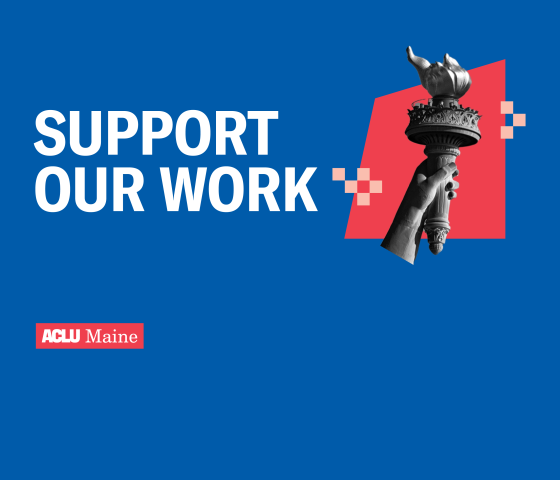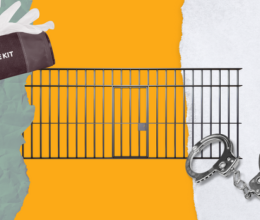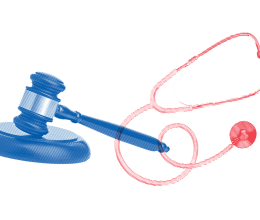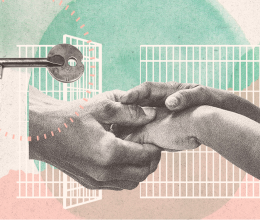On Monday, RH Reality Check published the first article in their “Women, Incarcerated” series. This first article focuses on one former prisoner’s experience with a high-risk pregnancy, forced induced labor, and shackling, all while in prison. The woman in question, Keeley Schenwar, was arrested in the spring of 2013 – the same day she found out she was pregnant. Schenwar had been struggling with addiction and had been in and out of jail several times for crimes related to drug dependency. For her last offense – stealing from Walgreen’s – she was sentenced to a year in Logan Correctional Center.
Schenwar received inadequate amounts of food while she was incarcerated. She spent a lot time feeling hungry. She was provided an extra apple or egg and a carton of milk, but that still wasn’t enough to satisfy her hunger. Schenwar is not alone in her experience. Studies done in New York and in Texas have also found that corrections facilities fail to provide adequate food for pregnant prisoners. The Women In Prison Project at the Correctional Association of New York recently released a study that called the quality of reproductive health care in New York state prisons “shockingly substandard.” You can read the executive summary of that report here.
One of the experiences most upsetting to Schenwar was her experience of forced induced labor. Forced induction of labor is a human rights violation. According to Farah Diaz-Tello, a staff attorney with the National Advocates For Pregnant Women, “Any forced induced labor is a human rights violation, even if the pregnant person isn’t incarcerated, because people have a fundamental human right to bodily integrity and to refuse unwanted medical intervention.”
In late August of 2013, the prison doctor told Schenwar that her labor was going to be induced. She objected, stating that she wanted to wait until her labor started naturally, but she was told that she had no choice. When she continued to object, the doctor called the prison guards:
“I had three, maybe four, guards surrounding me saying, ‘I don’t know where you think you are. This is our prison…[.]You’re not going to fall out in my yard or in the mess hall and cause some kind of chaos,’” she said. “I was scared and I was having a baby and I was in prison. I went back to my cell and cried, because I knew I would be alone.”
When RH Reality Check contacted the Illinois Department of Corrections to ask for comments on Schenwar’s allegations, the director of communications, Tom Shaer, replied with the following email: “Inmate anecdotes are often either wholly inaccurate or grossly exaggerated. Not always, but often.” Shaer has since left the Department of Corrections. Despite Shaer's insistence that Schenwar was a liar, RH Reality Check was able to find another woman, Kendra Smith, who said that guards tried to force her into induced labor.
Schenwar was also shackled to the hospital bed during labor and delivery – an experience she describes as being “lonely and traumatic.” Shackling pregnant inmates during labor and delivery is a cruel and unnecessary practice. Despite recent media coverage, shackling pregnant prisoners continues to be legal in more than half of states in the U.S. Even in states where shackling is banned, advocates and incarcerated women say that the practice continues because there’s no accountability system to ensure that shackling doesn’t happen.
Schenwar’s experience is not isolated. As Grainne wrote in her blog yesterday, “women have become the fastest growing incarcerated population…[.]Between 1980 and 2012, the number of women imprisoned in the United States increased from 25,000 to 200,000.” Of those women in prison, approximately 62 percent are parents, some of whom give birth while incarcerated.
Here at the ACLU of Maine, we’re addressing some of the injustices that pregnant prisoners experience by advocating for the passage of LD 1013, An Act To Prevent the Shackling of Pregnant Prisoners. LD 1013 will prohibit the use of restraints on pregnant prisoners during labor, transport to a medical facility or birthing center, delivery, and postpartum recovery. LD 1013 will keep pregnant prisoners and their pregnancies safe from injury, and it will allow women to heal and bond with their child after delivery. As Kimberly Capone-Sprague writes in a recently published LTE in the Portland Press Herald: “Women who give birth while incarcerated pay the highest price: being separated from their newborn children. It is cruel to further their consequences by demoting their safety and dignity.” It is our hope that LD 1013 will restore some modicum of dignity to pregnant prisoners.








